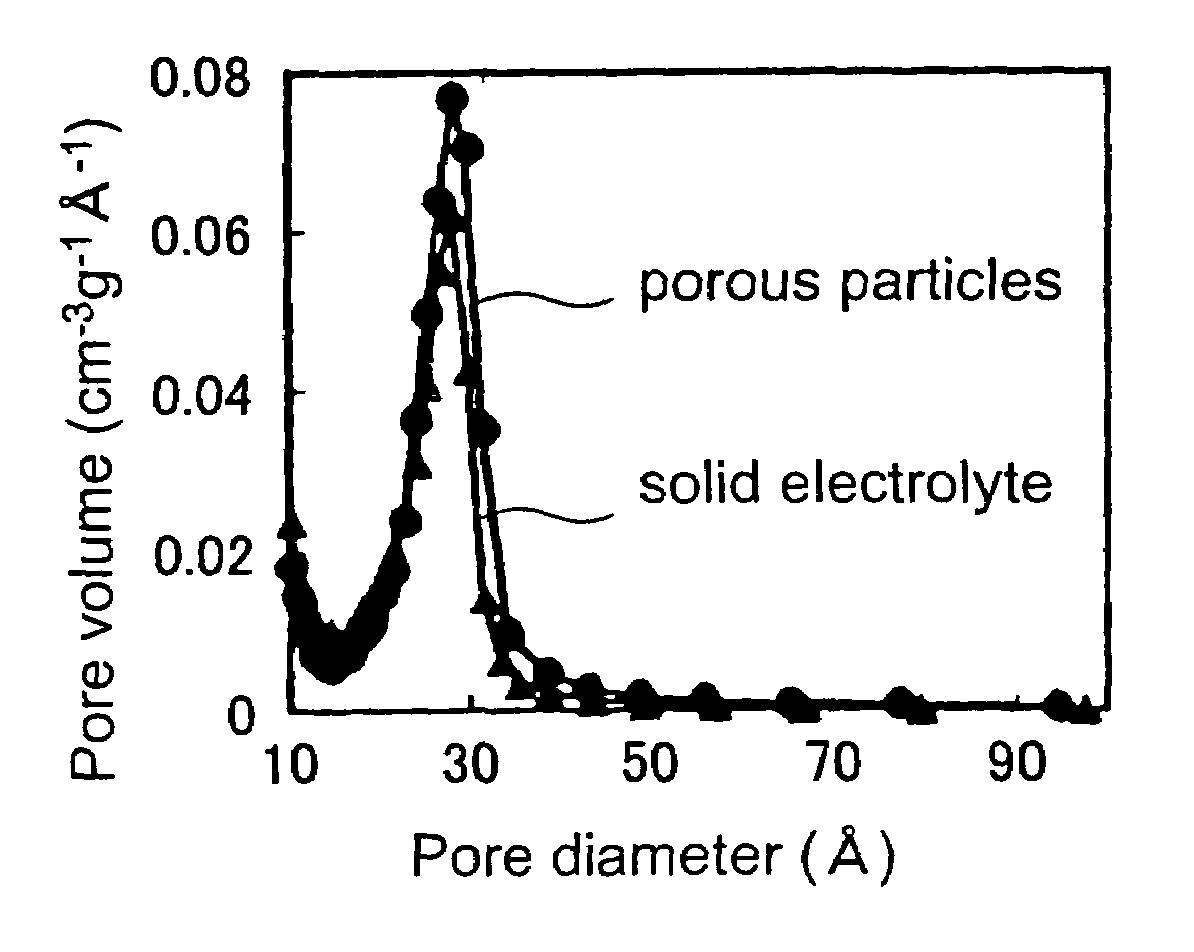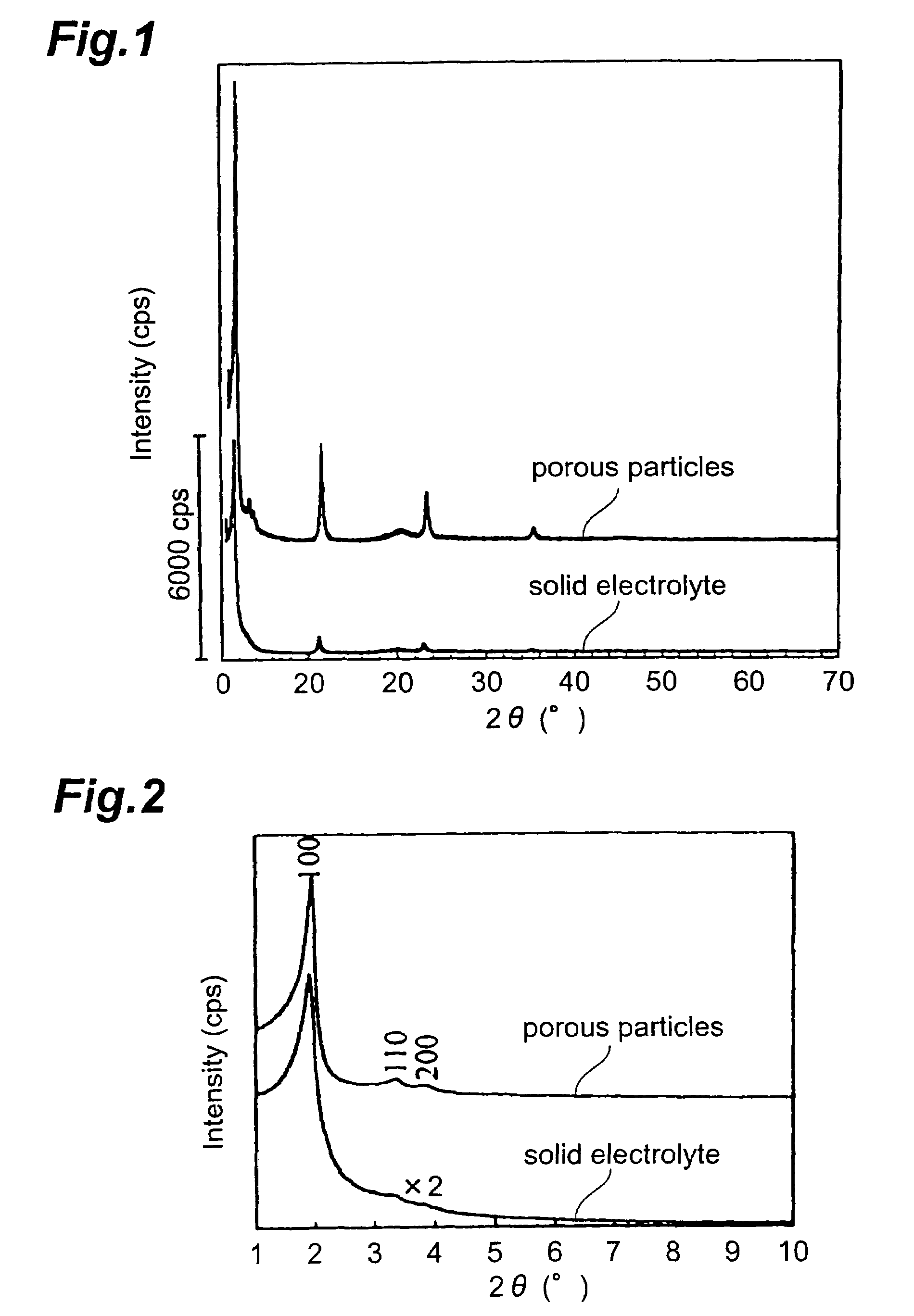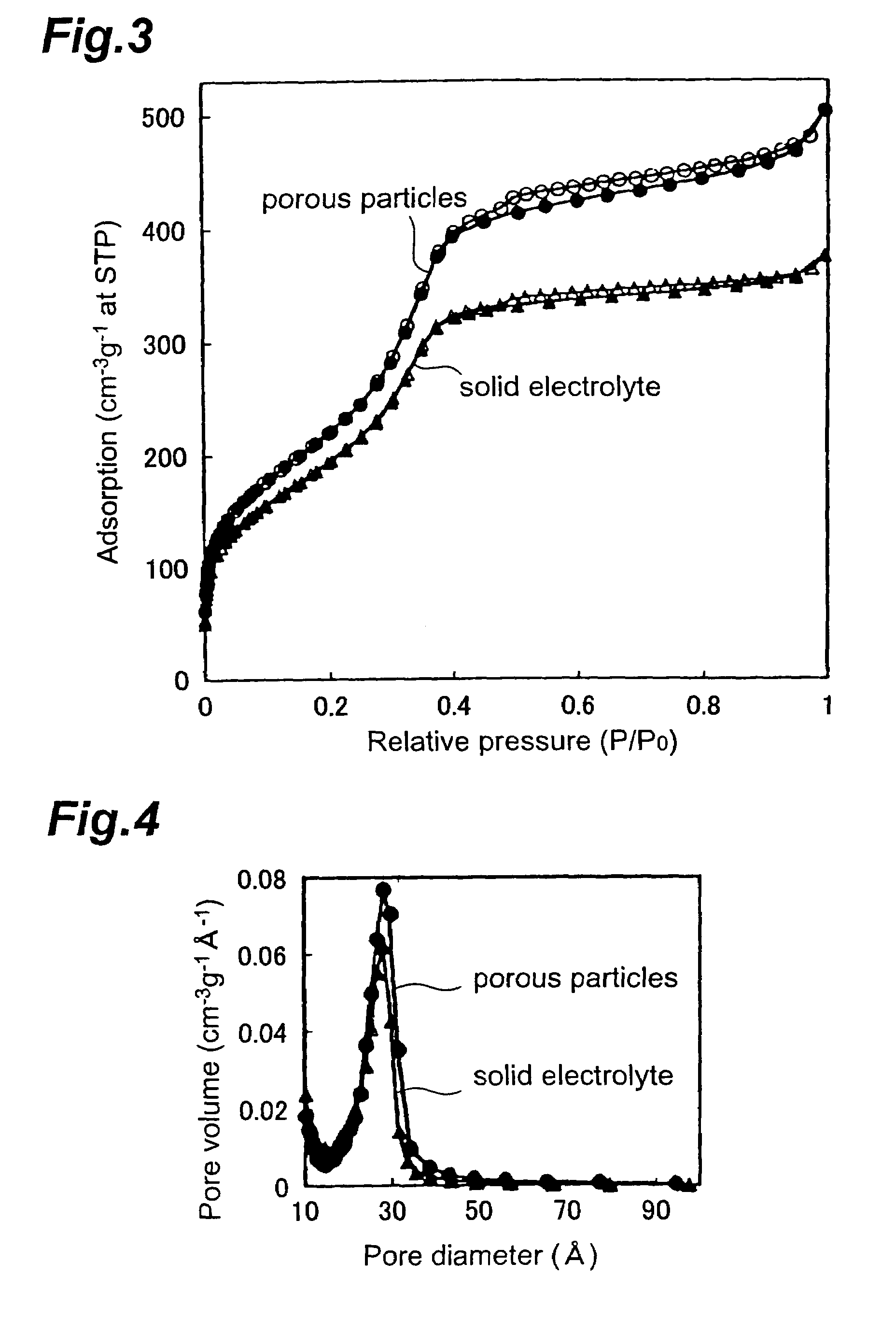Solid electrolyte
a solid electrolyte and electrolyte technology, applied in the field of solid electrolyte, can solve the problems that solid electrolyte does not necessarily exhibit sufficient ion conductivity and adequate ion conductivity, and achieve the effect of high ion conductivity
- Summary
- Abstract
- Description
- Claims
- Application Information
AI Technical Summary
Benefits of technology
Problems solved by technology
Method used
Image
Examples
example 1
Production of Porous Particles
[0100]16.665 g (47.88 mmol) of octadecyltrimethylammonium chloride (C18H37N(CH3)3Cl, hereinafter referred to as “C18TMA”), 500 g of ion exchange water, and 40 g of a 6N NaOH aqueous solution (NaOH content: 200 mmol) were put into a 1000 mL pear-shaped flask and stirred at 50 to 60° C., which gave a transparent solution. This solution was cooled to room temperature, after which it was briskly stirred while 20 g (49.67 mmol) of 1,4-bis(triethoxysilyl)benzene (hereinafter referred to as “BTEB”) was added, then an ultrasonic treatment was performed for 20 minutes while the flask was shaken by hand, which dispersed the BTEB in the solution. The reaction mixture thus obtained was allowed to stand for 20 hours at 95 to 98° C., which produced a white precipitate. The reaction mixture was filtered without being cooled, and the precipitate was recovered, which yielded 8.22 g of porous particle precursor containing a surfactant.
[0101]Next, 1 g of the porous partic...
example 2
[0107]A solid electrolyte was produced and sodium hydroxide titration was performed in the same manner as in Example 1, except that 30 g of 60 mass % fuming sulfuric acid was used instead of the 23 g of 50 mass % fuming sulfuric acid used in Example 1, and the reaction was conducted for 5.5 hours at 75 to 85° C. As a result, it was confirmed that 3.2×10−4 eq / g hydrogen ions were present in the obtained solid electrolyte. These results suggest that 8.3% of the phenylene groups of the porous material skeleton (—C6H4—Si2O3—) were sulfonylated, forming a skeleton expressed by —O1.5Si—C6H3(SO3H)—SiO1.5—.
example 3
[0108]A solid electrolyte was produced and sodium hydroxide titration was performed in the same manner as in Example 1, except that 30 g of sulfuric anhydride (SO3) was used instead of the 23 g of 50 mass % fuming sulfuric acid used in Example 1, and the reaction was conducted for 5.2 hours at 40° C. As a result, it was confirmed that 1.1×10−4 eq / g hydrogen ions were present in the obtained solid electrolyte. These results suggest that 2.9% of the phenylene groups of the porous material skeleton (—C6H4—Si2O3—) were sulfonylated, forming a skeleton expressed by —O1.5Si—C6H3(SO3H) —SiO1.5—.
PUM
| Property | Measurement | Unit |
|---|---|---|
| mean diameter | aaaaa | aaaaa |
| temperature | aaaaa | aaaaa |
| mean pore diameter | aaaaa | aaaaa |
Abstract
Description
Claims
Application Information
 Login to View More
Login to View More - R&D
- Intellectual Property
- Life Sciences
- Materials
- Tech Scout
- Unparalleled Data Quality
- Higher Quality Content
- 60% Fewer Hallucinations
Browse by: Latest US Patents, China's latest patents, Technical Efficacy Thesaurus, Application Domain, Technology Topic, Popular Technical Reports.
© 2025 PatSnap. All rights reserved.Legal|Privacy policy|Modern Slavery Act Transparency Statement|Sitemap|About US| Contact US: help@patsnap.com



